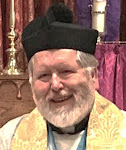Did you know that there are Catholic priests and Protestant pastors who refuse to let people put Christmas tree in churches on the basis that the Christmas tree is a pagan symbol? There are also very conservative Jewish people who never have a tree because it is Christian! And paradoxically, the vast majority of the implicitly pagan people around us (and, of course, I say that lovingly!) manage to be open enough to the Gospel to decorate their homes in honour of the Lord' Nativity.
In fact, many Christmas customs have evolved from centuries of interaction between faith and culture. When the Gospel was embraced by peoples in different parts of Europe, useful and well-loved aspects of pagan festivals were "baptized." The Catholic evangelist always tries to find continuities between a people's culture and the Gospel (consider St Paul's preaching in Acts 17).
The Christmas tree has actually been Christian for a very long time. There is an idea that Martin Luther popularised it, but we know that it goes much back further into Europe's Catholic past. We know that St Boniface used its triangular shape to teach about the Holy Trinity in his evangelisation of the Teutonic peoples. Merging into this is the fact that "Paradise Trees", allegorically connecting the tree in the Garden of Eden and the tree of Calvary frequently appeared in medieval mystery plays, and in the Preface of the Cross in the Missal:
It is very meet, right, and our bounden duty, that we should at all times, and in all places, give thanks unto thee : O Lord holy, Father almighty, everlasting God. Who by the tree of the Cross didst give salvation unto mankind : that whence death arose, thence life might rise again : and that he who by a tree overcame, might also by a tree be overcome : through Jesus Christ our Lord. Therefore with Angels and Archangels . . .
The same truth is brilliantly celebrated in the well-known hymn "Sing my tongue the glorious battle" by the 6th century Venantius Honorius Clementianus Fortunatus:
Faithful Cross, above all other,
one and only noble Tree,
none in foliage, none in blossom,
none in fruit thy peer may be;
sweet the wood, and sweet the iron,
and thy load, most sweet is he.
Bend, O lofty Tree, thy branches,
thy too rigid sinews bend;
and awhile the stubborn hardness,
which thy birth bestowed, suspend;
and the limbs of heaven's high Monarch
gently on thine arms extend.
Thou alone wast counted worthy
this world's Ransom to sustain,
that a shipwrecked race for ever
might a port of refuge gain,
with the sacred Blood anointed
of the Lamb for sinners slain.
It is well-known that the modern popularity of Christmas trees in Britain is due to the influence of Queen Victoria and Prince Albert.
So . . . the tradition has a long pedigree; and whatever its precise origin, it has become a powerful way of representing the Gospel (which always finds new forms of expression in symbols that did not start out as specifically Christian).




















0 comments:
Post a Comment